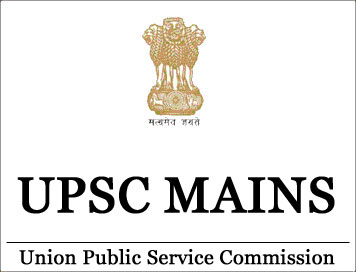(HOT) UPSC Current Affairs 2025 PDF
NEW! The Gist (NOV-2025) | E-BOOKS
(Exam Paper) UPSC IAS Mains 2009: History

(Exam Paper) UPSC IAS Mains 2009: History
Paper- I
Section - A
1. Mark any ffiftten of the following places on the map supplied to you and write short descriptive notes on these places marked by you:
(i) Koldihwa
(ii) Kuchai
(iii) Utnur
(iv) Patne
(v) Semthan
(vi) Bagasra
(vii) Balathal
(viii) Hallur
(ix) Kandahar
(x) Ter
(xi) Uchh
(xii) Gyaraspur
(xiii) Uttaramerur
(xiv) Lalkot
(xv) Sittanavasal
(xvi) Mansura
(xvii) Jaunpur
(xviii) Daojali Hading
(xix) Machilipatnam
(xx) Mahisadal
2. In what ways are the accounts of the GraecoRomans and the Chinese helpful in reconstructing the social history of India ? How far is their information corroborated by other contemporary sources ?
3. (a) Evaluate the various approaches to the understanding of Vedic religion.
(b) Give an account of the use of gold coins by commoners in the Gupta period.
4. Bring out the regional variations in the early South Indian temples’ architectural styles.
Section – B
5. Write short essays in not more than 200 words each on any three of the following
(a) Applicability of the term ‘Indian Feudalism’ to early Medieval society
(b) Muhammad Tughluq as an agrarian innovator
(c) Implications of Akbar s notion of Sulh- i - Kul
(d) Estimates of population of Mughal India
6. (a) How far can the village assemblies or communities under the Cholas be really called democratic ?
(b) Assess Kalhana’s views on history.
7. (a) Identify the main factors that sustained the expansion of urban economy in the Delhi Sultanate.
(b) Give an estimate of Akbar as a promoter of technology.
8. (a) Give a critical assessment of the contributions of Amir Khusrau and Barani to Indo -Persian literature.
(b) “The major causes of revolts against the Mughal Empire during the latter half of the 17th century were economic, rather than religious.” Discuss.
Click Here to Download Full Papers
DOWNLOAD UPSC MAINS HISTORY 11 YEARS SOLVED PAPERS PDF
DOWNLOAD UPSC MAINS HISTORY 10 Years Categorised PAPERS
Study Notes for UPSC MAINS HISTORY Optional
Printed Study Material for IAS PRE cum Mains General Studies
Paper- II
Section - A (Modern India)
1. Comment on any three of the following statements in about 200 words each:
(a) “Though the Permanent Settlement had serious defects, it gave tranquillity to the countryside and stability to the government.”
(b) “The Arya Samaj may quite logically be pronounced as the outcome of conditions imported into India by the west.” (Lala Lajpat Rai )
(c) “Please remember, in granting separate electorates we are sowing the dragon’s teeth and the harvest will be bitter.” (Morley)
(d) “The annexation of Awadh shook the loyalty of the Sepoys, as it was for them an ultimate proof of untrustworthiness of the British.”
2. (a) Why was Mysore-considered a threat by the British to their possessions and mercantile interests in the south. Do you think that Tipu Sultan’s posturing became his undoing ?
(b) How did the East Indian Company become the dejure power in India ?
3. (a) How did social legislation in the nineteenth century improve the condition of women in India ?
(b) Analyse the social composition of the early Congress leadership.
4. (a) Discuss as to why the Congress accepted the partition of India in 1947.
(b) Do you think that the Quit India movement was a Spontaneous Revolution ?
Section - B (World History)
5. Comment on any three of the following statements in about 200 words each:
(a) “The capitalism which gave the European empires their apparent solidarity and permanence also hastened their downfall.”
(b) “In all the long annals of Imperialism, the partition of Africa is a remarkable freak.”
(c) “Hitler did not really want a world war. His intention was only a short war with Poland.” (A. J. P. Taylor)
(d) “Arab nationalism and oil - there were the principal factors in complicating the relations of middle eastern countries with the outside world.”
6. (a) Discuss the emergence of neo-imperialism in the late nineteenth century.
(b) What was the extent of industrialization in Western Europe by the end of the nineteenth century?
7. (a) How did Napoleon Bonaparte fuse the old France with the new?
(b) Why did Vietnam go through thirty years of war after the second world war?
8. (a) Account for the overthrow of the Tsarist regime in Russia.
(b) Examine the peace – keeping efforts of the United Nations Organization.


